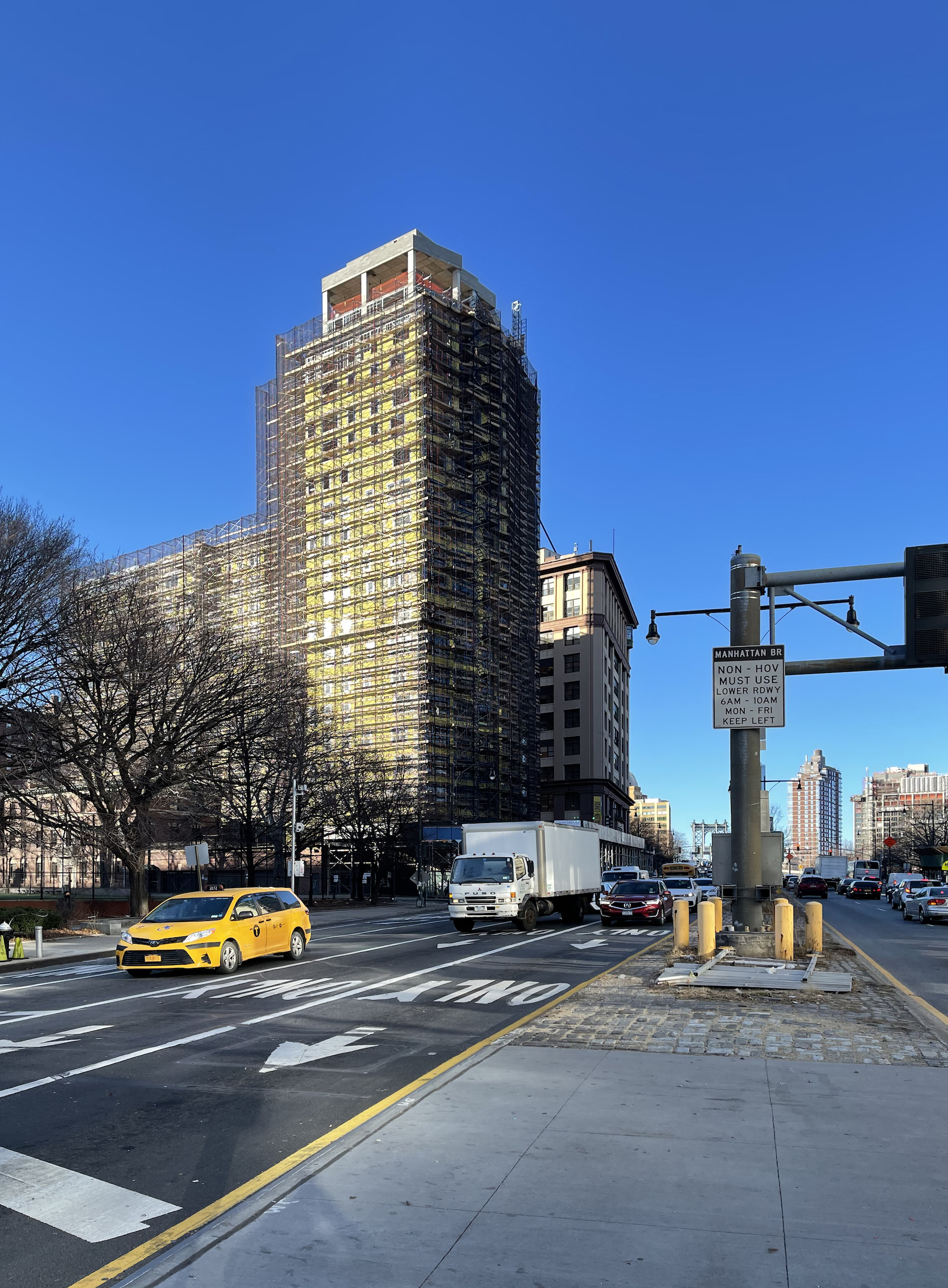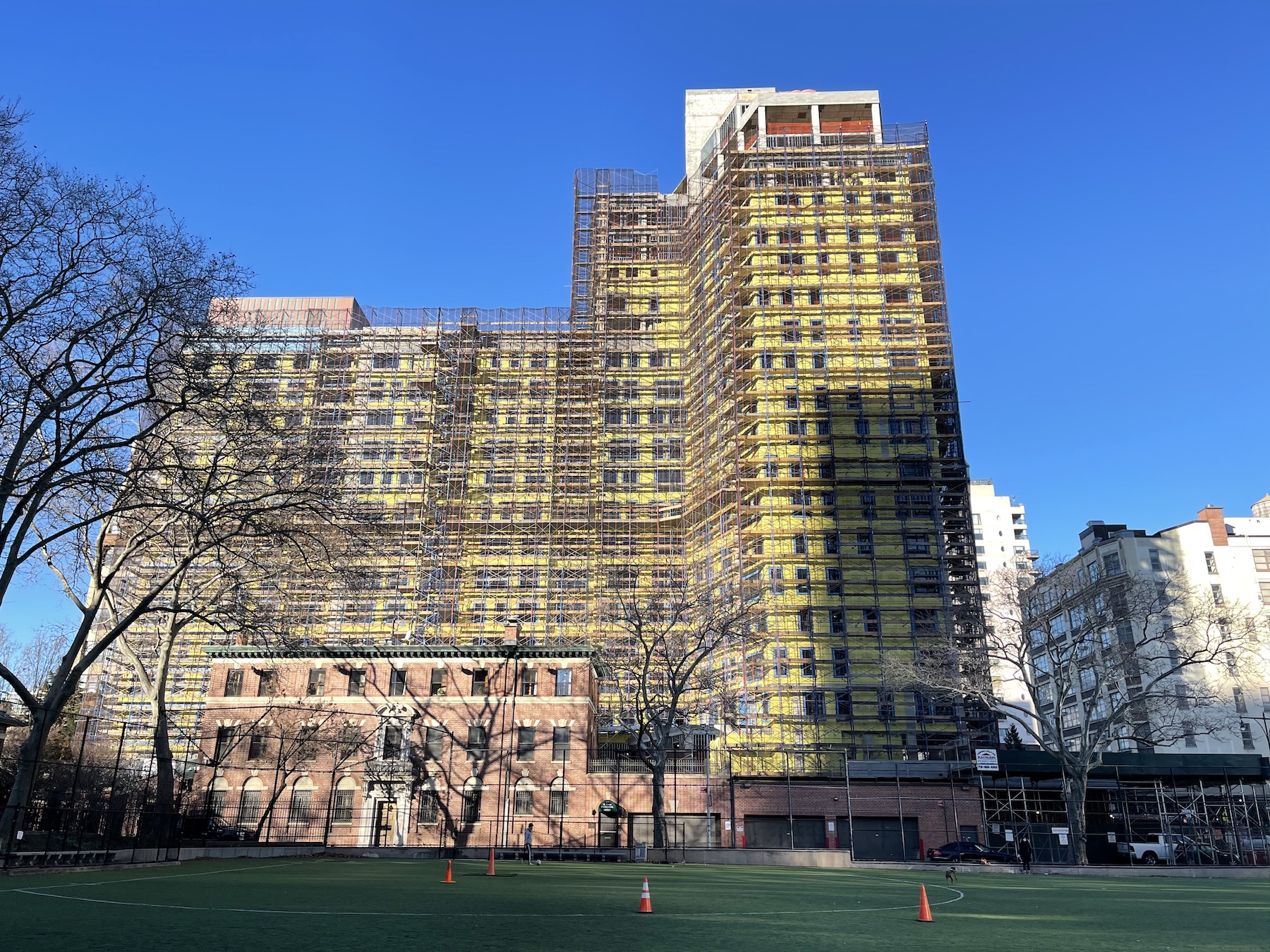Among its many legendary attributes, New York City is known for its rabid sports fans, foldable pizza slices, and wealth of arts and culture. But it’s the city’s iconic architecture that perhaps best defines its footprint I n the northeast. When Delshah Capital and OTL Enterprises selected a team to design and build a 20-story high rise in the bustling borough of Brooklyn, it was literally Go Big or Go Home.
The Challenge
The 211-foot stunner situated at 22 Chapel Street presented an exciting opportunity to build a towering structure to compliment the revitalization of downtown Brooklyn. Designed by CetraRuddy Architecture, the property is located at the south end of the Manhattan Bridge, presenting it with a high amount of exposure to admirers near and far.
Housed within its 167,000 square feet will be 180 residential units, retail space, and a community facility. Since the building needs to withstand the extremes of New York weather – including punishing rain and snow – a superior weather barrier system was a must. Additionally, the building exterior required a barrier material that would work well with metal panels and provide high levels of energy efficiency. That’s when two Georgia-Pacific innovative water-resistive barrier/air barrier (WRB/AB) solutions answered the call: DensElement® Barrier System and DensDefy™ Accessories.
Not Just a Square Box
The building’s southern-facing façade and tower were uniquely designed to allow for exceptional views and to flood the interior with natural light. “It’s not just a square box,” said Darren Glisan, senior project manager at Titanium Construction Services, the general contracting firm hired for the job. “The façade elevation is highly complex in that the slab edges do not align with one another at the east end of the building. That was a fun challenge,” Glisan continued.

Another notable part of the job was that DensElement Barrier System and DensDefy Accessories weren’t initially specified. The façade design originally called for porcelain tile and sheathing that was specifically designed for that material. However, the porcelain was later shelved for metal panels since they were more cost-efficient and easier to work with.
That’s why Willis Ting, project manager and senior associate at CetraRuddy Architecture, turned to DensElement Barrier System, which integrates gypsum sheathing with a water-resistive barrier and an air barrier, along with DensDefy Accessories to seal the building envelope. According to Ting, “The DensElement Barrier System (and DensDefy Accessories work) better with certain products – and metal panels are one of them. And, considering all the seams that have to be protected from the weather, we needed to choose the best (system) for the job.”
Thornton Tomasetti, the façade consultants and structural engineers, still need proof before moving forward. “Thornton Tomasetti are serious engineers. They know their stuff and they don’t compromise,” remarked Glisan. The team conducted a WUFI analysis, the industry’s most advanced analytical simulation of hygrothermic (the combination of heat and moisture) conditions in a building envelope. The results spoke for themselves, demonstrating that DensElement Barrier System with DensDefy Accessories was indeed the best water-resistive/air barrier for the job. Ting noted convincingly, “It’s a one-stop shop. (DensElement and DensDefy make) the design team feel secure that we’re handing off the right products to the construction team.”
Exceeding Sky-High Expectations
Once the build began, DensElement Barrier System and DensDefy Accessories were put to the true test. “You need to make sure the whole building is sealed the right way. By selecting the right (products), we know the building will not leak, is fully airtight, and the insulation will be protected,” said Ting.
Among the advantages of DensDefy Accessories are the simplicity and efficiency of installation, even in wet weather. DensDefy™ Liquid Flashing waterproofing, adhesive, and detailing compound seals rough openings, penetrations, joints, and seams. DensDefy™ Transition Membrane is a self-adhered, butyl-based membrane used on drift or control joints, vertical expansion joints, and gaps greater than 1” to ensure envelope continuity. “Together, they perform as though they’re a waterproofing membrane, and that simplicity is their greatest benefit,” said Glisan of DensDefy Accessories’ performance on the job.
While “time is money” is a figure of speech for some, for the team on a build, it’s what drives their business. Glisan went on to discuss how waterproofing materials have only gotten more complex, specifically referring to liquid-applied membranes, which often require installers to double-back to ensure the material specifications are being followed.
Another challenge when roll-on-specific applications are used is the material driving onto finished elements of the building, like windows and the floors below. DensElement Barrier System removed any worry about spending extra time on quality control.
The heightened level of durability and efficiency delivered by the Georgia-Pacific products was echoed by everyone contributing to the project. After using DensElement Barrier System and DensDefy Accessories for the first time, John Vennera, field supervisor at PG New York, remarked, “we’re closing the building up way quicker than normal, which allows the other trades to move along. And, obviously, any client would appreciate that.”
Mike Whitmore, the purchasing director at PG New York, not only said that the speed of the installation process cut labor costs, but also the two-in-one combination of sheathing and weather resistance for a set price from one company made purchasing faster and easier. “There were even (fewer) bills for scaffolding because the guys spent less time on it,” said Whitmore. “Combining the waterproofing and sheathing is good because when it comes to warranty time, you have one single source.”
DensElement Barrier System and DensDefy Accessories can be installed without damage in rain and even in New York’s winter weather. This helped streamline the installation and overall production schedule by allowing the window installers to move in quicker and, in turn, close the building faster so interior work could stay on schedule.
A product is only as good as the company standing behind it. From the development of innovative building materials to the distribution network making sure they arrive on time, Georgia-Pacific is proud to be part of Brooklyn’s newest landmark building. It’s been said that everyone in New York has a story; thanks to those who put their trust in us at 22 Chapel Street, we do, too. 20 stories, to be exact.
Related Stories
| Aug 11, 2010
ASHRAE releases free BIM introductory guide
A newly released guide from ASHRAE on building information models and building information modeling (BIM) serves as a resource for professionals considering BIM tools and applications for their businesses. According to "An Introduction to Building Information Modeling," BIM is “a digital representation of the physical and the functional characteristics of a facility.” Unlike 2D or 3D CAD, BIM software utilizes intelligent objects to create models.
| Aug 11, 2010
AIA report estimates up to 270,000 construction industry jobs could be created if the American Clean Energy Security Act is passed
With the encouragement of Senate majority leader Harry Reid (D-NV), the American Institute of Architects (AIA) conducted a study to determine how many jobs in the design and construction industry could be created if the American Clean Energy Security Act (H.R. 2454; also known as the Waxman-Markey Bill) is enacted.
| Aug 11, 2010
VAST Enterprises wins "Design for Sustainability"
VAST Enterprises, LLC announced that it won the "Design for Sustainability" Award from the Plastics Environmental Division of the Society of Plastics Engineers. VAST received the honor as part of the 2010 Environmental Stewardship Awards competition.
| Aug 11, 2010
BuildSite introduces LEED submittal templates for green building
BuildSite, a single source of product, technical, and procurement information for construction, has introduced online submittal templates tied to BuildSite Green Data.
| Aug 11, 2010
NoricF4 custom metal ICF frames receive fire ratings, comply with antiterrorism standards for buildings
Reward Wall Systems' NoricF4 Custom Metal ICF Frames have received fire ratings of 1.5 hours to 3 hours and they have been evaluated to be in compliance with the prescriptive requirements of the Department of Defense Minimum Antiterrorism Standards for Buildings for blast/force protection.
| Aug 11, 2010
Nation's first set of green building model codes and standards announced
The International Code Council (ICC), the American Society of Heating, Refrigerating and Air Conditioning Engineers (ASHRAE), the U.S. Green Building Council (USGBC), and the Illuminating Engineering Society of North America (IES) announce the launch of the International Green Construction Code (IGCC), representing the merger of two national efforts to develop adoptable and enforceable green building codes.
| Aug 11, 2010
Retail construction recession to end later in 2010
The recession reduced retail construction spending early and deeply, but now most of the decline should be behind us. Construction spending is down 48% over the last two-and-a-half years, and the value of retail construction starts reported by Reed Construction Data fell 41% in 2009 vs. 2008. Construction spending is expected to drop 5-6% more by late 2010; the decline will be close to 10% afte...
| Aug 11, 2010
A few bright spots for AEC firms in 2010
The AEC industry is heading into 2010 in better shape than was the case a year ago, according to the 2010 AEC Industry Outlook: Strategy and Insight for Design & Construction Firms, a new forecast released by ZweigWhite this month. A significant turnaround for the commercial market isn't anticipated until 2011, but a modest pickup is expected in late 2010.






